Search
Using the filters to the left, click your selection, it will become bold and filter the results, click it again to remove that filter.
Explosive Ordnance (EO) and Improvised Threats (collectively Explosive Hazards) caused 7,239 civilian casualties in 2017, and 15 of the ADF casualties on operations in Afghanistan. The threat of Explosive Hazards is high risk and continually evolving. We only have to look at the examples of Mosul and Marawi to see that, as the pace of war increases, this threat will continue to proliferate. While my pitch focuses on Explosive Ordnance Disposal (EOD), my proposed solution has application across the entire …
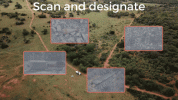
Bottom line up front Cyber warfare is growing as a domain of warfare but requires a different approach than the environmental domains. The individual services are not large enough to effectively generate cyber warfare capability and therefore Australian Defence Force (ADF) cyber operations must be a truly Joint enterprise. This will involve a raise, train, sustain and deliver model more similar to Special Forces than conventional capabilities, with Joint funding and direction, and the human capability …

As Artificial Intelligence and Autonomous Systems proliferate, we must be prepared for what is to come. “I’m certainly questioning my original premise that the fundamental nature of war will not change. You’ve got to question that now. I just don’t have the answers yet,” US Secretary of Defense Jim Mattis, on the impact of intelligent machines The Chief of Army’s Futures Statement, Accelerated Warfare , discusses the link between technology and the rapidly changing character of war. Specifically, …

In 2015, the First Principles Review Report observed that Defence was lacking in its ability to manage and use its data. Duplication, fragmentation and inconsistency were cited as key shortfalls that were likely to impact the delivery of anticipated outcomes for a range of complex, information dependent capability investments. Confirming this, the Defence Enterprise Information Management Strategy 2015 – 2025 noted a proliferation of information and communication applications, siloed solutions, inadequate …
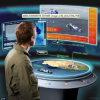
In August 2018 the Australian Chief of Army, Lieutenant General Rick Burr, issued his futures statement titled Accelerated Warfare . The statement sought to stimulate thinking, engagement and debate about how the Australian Army prepares for future conflict. The Chief of Army’s statement focuses on how the Army should prepare for war. While Humanitarian Assistance and Disaster Relief (HADR) is not warfare, HADR responses contribute to Army’s strategic task of shaping Australia’s strategic environment . …

In part one of this two-part series, I argued that the Australian Army must make Humanitarian Assistance and Disaster Relief (HADR) operations part of the strategic plan for how the Australian Army prepares for the future. Here I will show how Army can use its health assets to prepare a capable and well-equipped force that is both ready now and future-ready within the concept of Accelerated Warfare . The Australian Army needs to consider how it will prepare a future-ready force that is capable of …
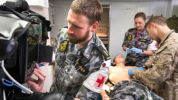
Our current conflicts require action across all domains: the physical, information and cognitive. However, one must ask if the idea of ‘messaging and narrative’ has been over-emphasised to the detriment of real actions. Is Information Operations (IO) the new black ? Clausewitz called war a clash of wills. Mao saw it as a people's struggle. Jomini, whose theory drives much of our planning process, highlighted the importance of will to fighting. These, and many other, theorists understood that actions and …
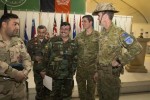
PME needs to produce strategists able to draw sufficient conclusions from insufficient resources. One tool used to develop such leaders is the staff ride . The Australian Army has limited experience with staff rides, conducting its first staff ride of the modern era in 2017 . In our view, this nascent staff ride programme can do more, not just to explorie past battlefields but to include potential battlespaces that represent the Future Operating Environment. Historical analysis of past battlefields asks …
In addition to reaffirming the acquisition of two new replenishment vessels by the early 2020s, the 2016 Defence White Paper had a surprising inclusion – “a third high-capacity replenishment ship or an additional logistics support ship similar to HMAS Choules in the late 2020s”. Less of a surprise was the programing of the replacement of HMAS Choules, as “the benefits of this type of vessel in extending the reach of the ADF and enhancing our capacity to deploy larger and better-equipped forces”, are well …
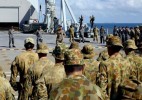
Part 1 in this series looked at the benefits provided by a third replenishment ship, and identified significant advantages to achieving the objectives stated in the 2016 Defence White Paper . The option for this ship to be “an additional logistic support ship similar to HMAS Choules in the late 2020s” in addition to replacing Choules on first review would appear an unlikely option. Important questions should be answered about how Army will be transported and supported for the increased regional …

